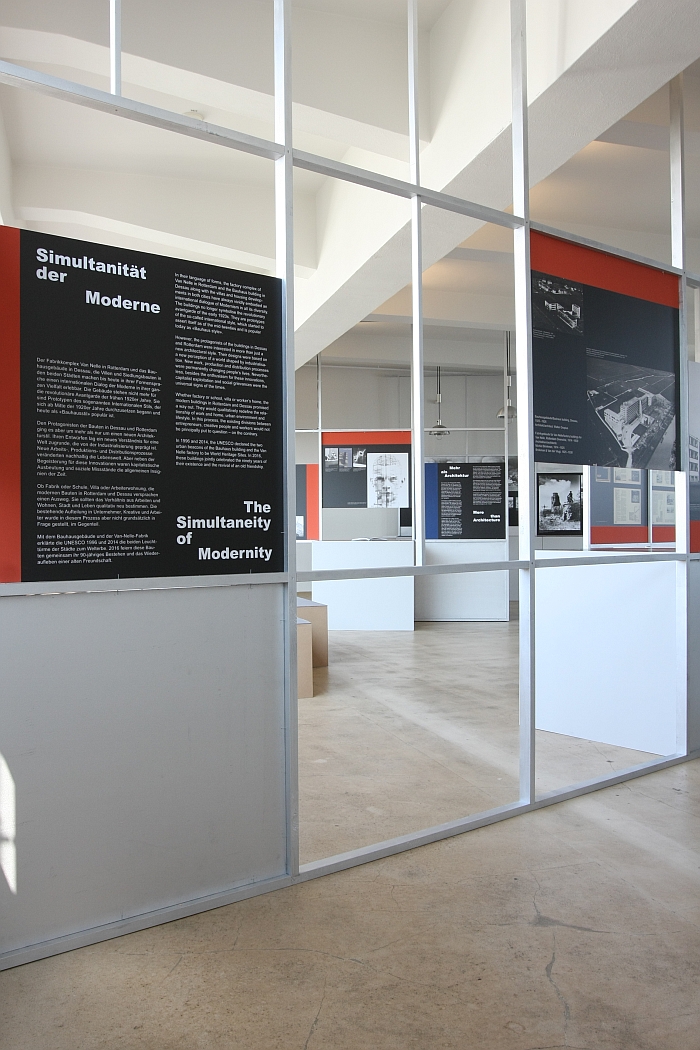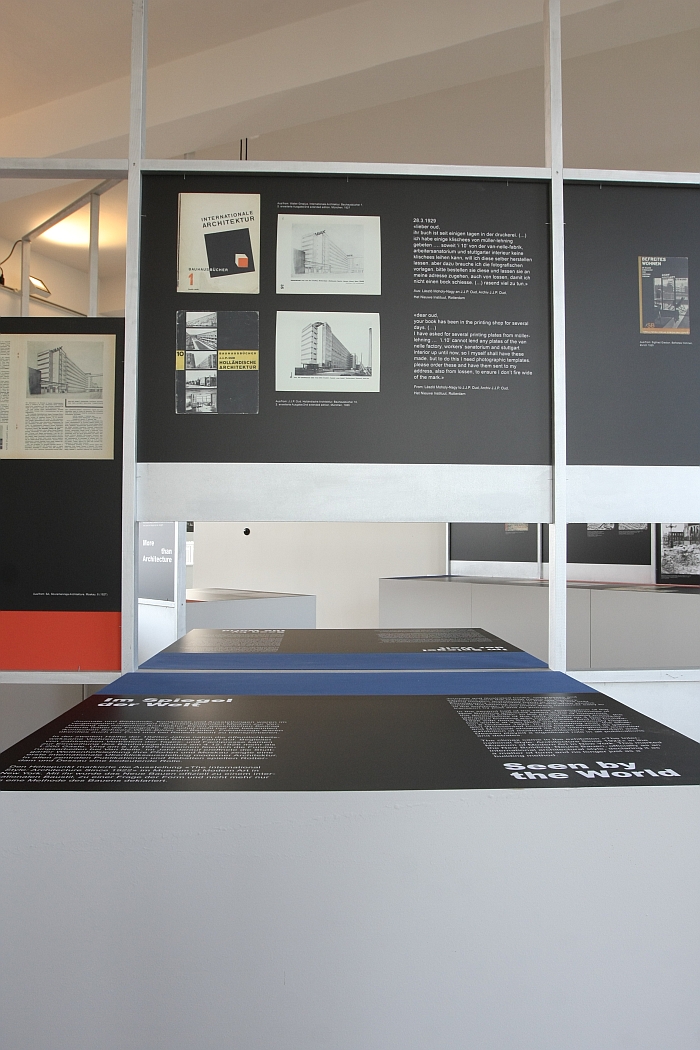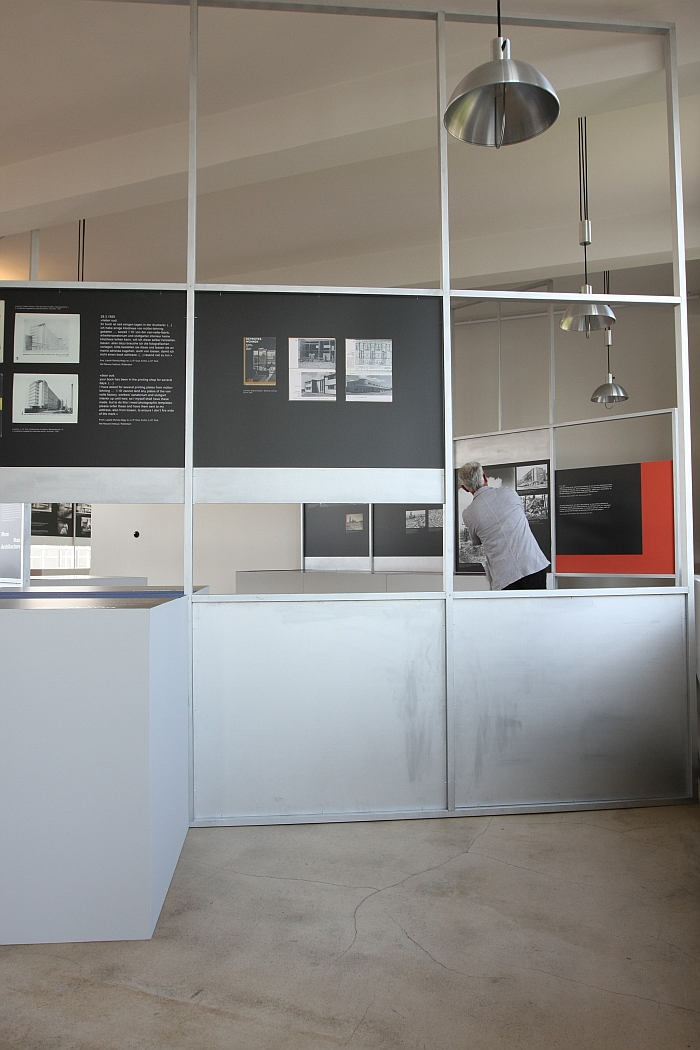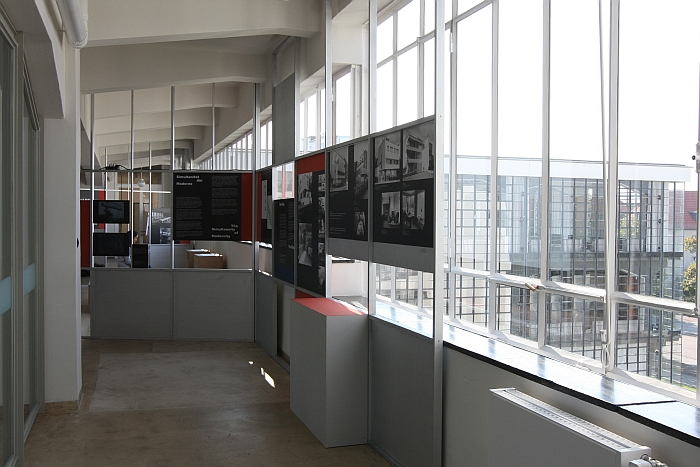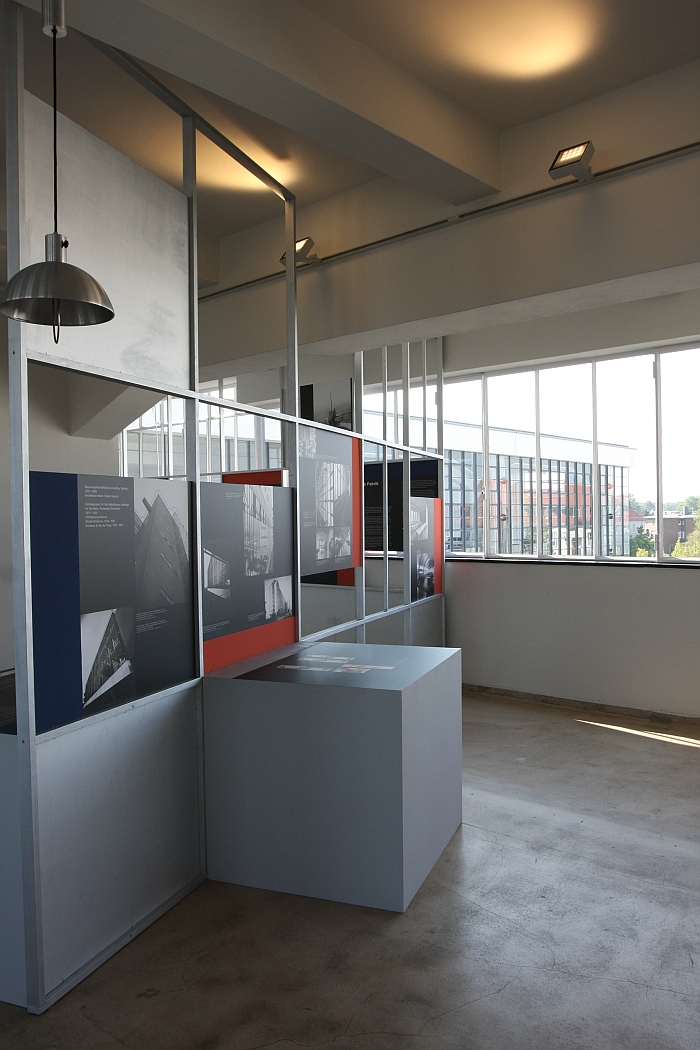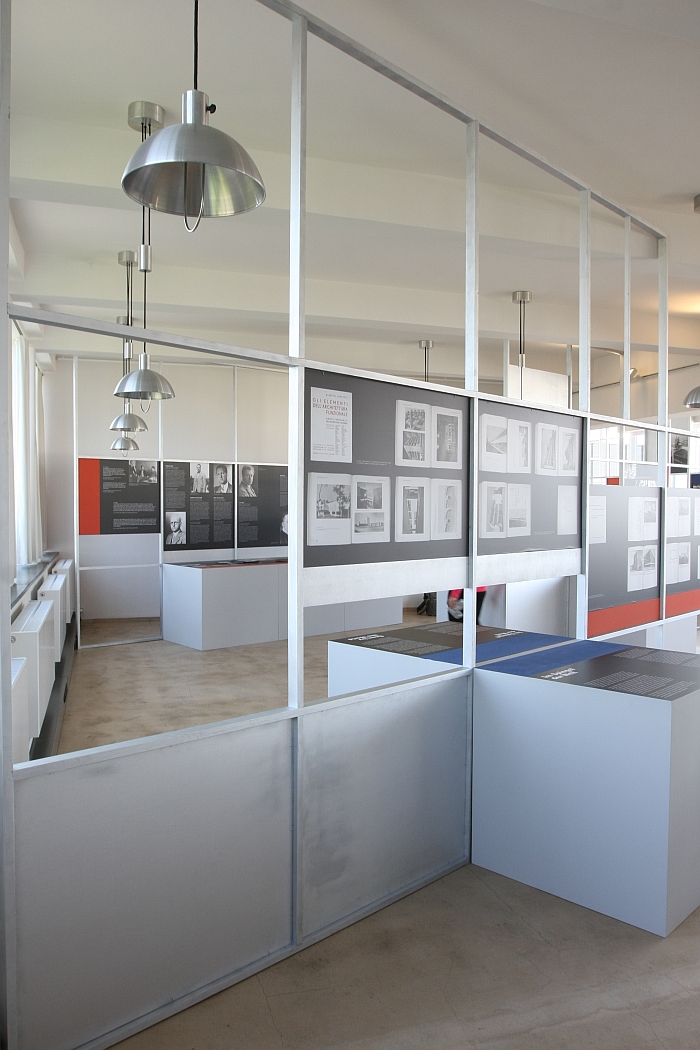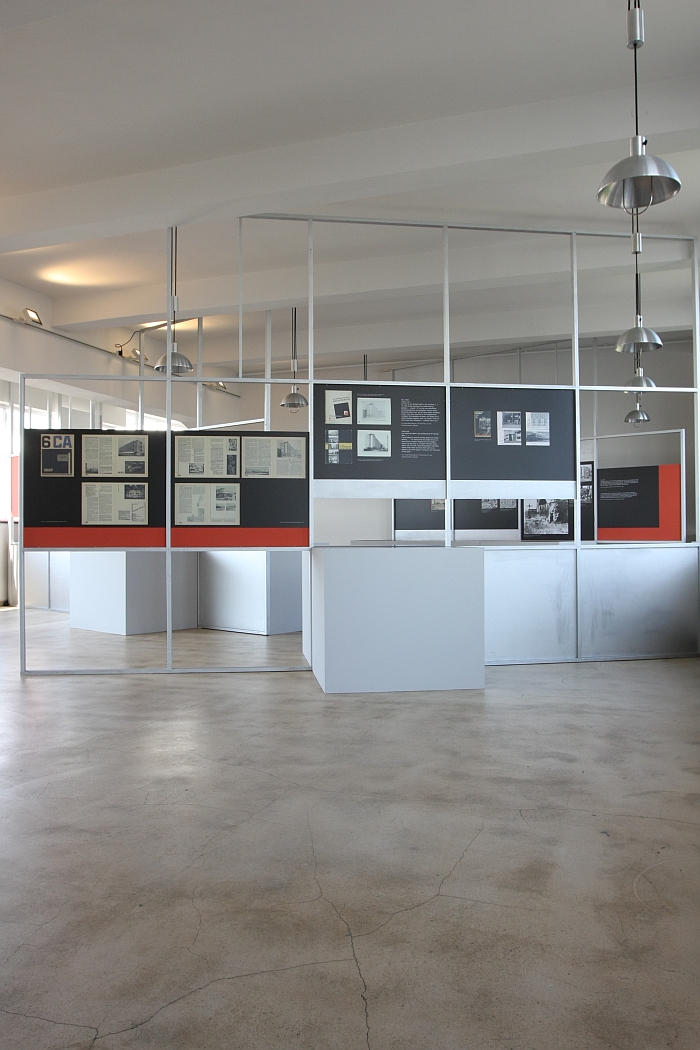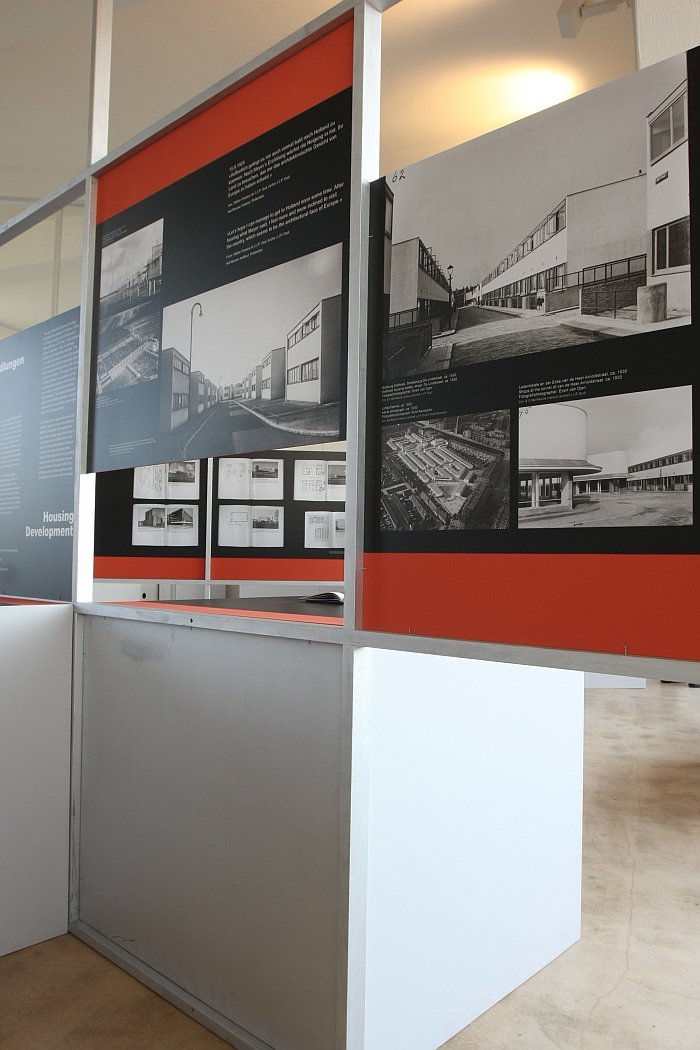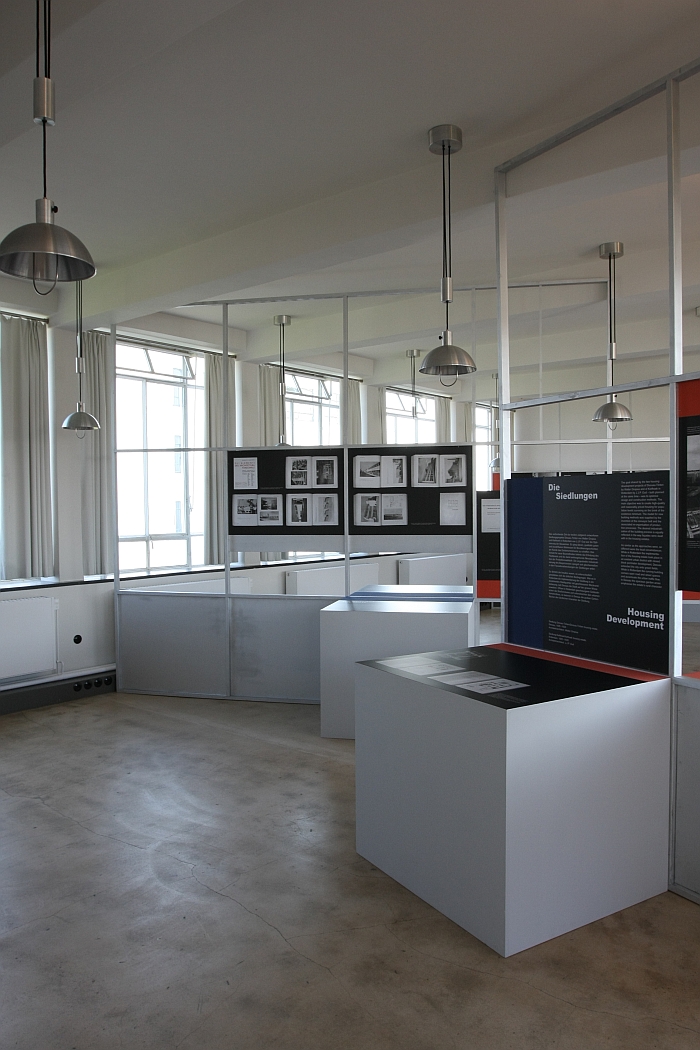Stiftung Bauhaus Dessau present The Simultaneity of Modernism
Dessau and Rotterdam may appear unlikely brothers in arms; however, an exploration of the towns’ architectural connections helps explain International Modernism.
The Bauhaus School building by Walter Gropius in Dessau is, arguably, the best known and most popular example of International Modernist architecture in Germany
The Van Nelle factory by Johannes Brinkman and Leendert van der Vlugt in Rotterdam is, arguably, the best known and most popular example of International Modernist architecture in the Netherlands.
The two however have much more in common
Both set new standards, technically as well as formally; both were as concerned with the social and hygienic conditions inside as they were with external aesthetic, artistic factors; both questioned accepted convention and traditional norms; both inspired a younger generation of architects; both in their own way caused small architecture revolutions, the aftershocks of which can still be felt. And both celebrate a 90th anniversary in 2016: Van Nelle the official start of construction with the laying of the foundation stone, Bauhaus its opening. And thus, so reasoned the Stiftung Bauhaus Dessau and the Werelderfgoed Van Nellefabriek, represented an opportune moment to reflect on the relationship and dialogue that existed between Rotterdam and Dessau in the inter-war years.
The result is the exhibition The Simultaneity of Modernism.
The Simultaneity of Modernism – Dessau and Rotterdam
Although the Van Nelle/Bauhaus School comparison is perhaps the most obvious parallel between the (hi)stories of inter-war architecture in Dessau and Rotterdam, The Simultaneity of Modernism takes a much wider perspective and presents an exploration of the Dessau/Rotterdam connection in three chapters: Bauhaus School/Van Nelle, Törten Estate Dessau/Kiefhoek Estate Rotterdam and the Gropius Meisterhaus Dessau/Villa Sonneveld Rotterdam.
The exhibition’s focus away from Van Nelle/Bauhaus School being important in helping underscore both that Dessau is more than the Bauhaus School but is a town where Bauhäusler actively participated in the urban planning, and also that International Modernism is and was more than architecture in a formal sense but was about redefining and reconsidering our relationship with the built environment, responding to the new scientific and social realities, attempting to understand what that meant for the individual and for society and to respond appropriately.
As state of affairs The Simultaneity of Modernism makes very clear, thanks in no small part to a very well thought through and realised exhibition design concept: not only in the way it makes formal reference to the windows of the Bauhaus School building but also through the intelligent use of very accessible, short, texts which explain the salient without getting caught up or bogged down in unnecessary textual ornamentation or grammatical embellishment.
So all very Modernist.
The Simultaneity of Modernism – Germany and Holland
In addition to the three chapters exploring the individual projects, their impact, their legacy and the wider cultural and social aspects of the period, a very interesting sub-plot runs through the course of the story, sometimes obvious, sometimes less so, but always present: the personal relationships between the leading protagonists.
Through a liberal sprinkling of quotes and references The Simultaneity of Modernism makes very clear that the inter-war exchange and dialogue between Dessau and Rotterdam existed just as much on personal levels as on professional, theoretical, architectural, levels. And that this personal dialogue was every bit as important for the developments in both locations as the professional exchanges.
And which by extension reminds us how close the relationship in general was between Holland and Germany back in the day: beyond Rotterdam with architects such as J.J.P Oud, Robert van ‘t Hoff or Mart Stam, the connections and friendships also ran through, for example, Utrecht with the likes of Gerrit T. Rietveld or Amsterdam with Theo van Doesburg.
International Modernism may have taken on its final form in Germany, but that would have been unimaginable without the Dutch contribution.
The Simultaneity of Modernism – A Contemporary Extension?
Since the war Rotterdam has continued its architectural evolution; the immediate post war reconstruction including projects such as the Lijnbaan central shopping street, Europe’s first pedestrian precinct, or the Groothandelsgebouw wholesale facility, a building very reminiscent, conceptually and visually, of the Merchandise Mart in Chicago, and a work designed by Maaskant and van Tijen, in whose office a young Fritz Haller worked in the late 1940s and where he learnt what industrial scale construction actually meant and thus the relevance of systems. More recent years have seen developments such as the New Rotterdam Central Station by Benthem Crouwel Architects, MVSA Architects & West 8, the so-called Cube Houses by Piet Blom and the Markthal by MVRDV architects.
Dessau.
Although to be fair to Dessau, since the war they haven’t really enjoyed the cultural, political or financial freedoms and advantages that has allowed Rotterdam to develop as it has.
A dialogue with Rotterdam however continues, or at least continued, through the Ampelhaus in nearby Oranienbaum, a project run/ran by the Rotterdam based Stichting Orangemann and in whose garden stands/stood the Tree Trunk Chair by Rotterdam based designer Jurgen Bey: one of the most magnificent examples of contemporary chair design, a project inspired by the gardens of Schloss Oranienbaum and an object which questions and redefines as much as it visually pleases.
And so as Dessau looks, as they increasingly must, for answers to questions of how the city could, should develop, and how urban planning and architecture can be best employed to improve and evolve the social and cultural fabric of the city, and thus the relationships between its inhabitants, remembering the Rotterdam connection and engaging in a dialogue with contemporary Rotterdam creatives may be every bit as relevant and fruitful as looking to the lessons taught by Bauhaus.
Triennial of Modernism – Walter Gropius & Freiräume
Staged in context of the Triennial of Modernism, a, as the title neatly alludes to, triennial celebration of Modernism taking its impetus from the UNESCO World Heritage sites in Weimar, Dessau and Berlin, The Simultaneity of Modernism is in addition to an exploration of the historical Rotterdam-Dessau axis also both an attempt to extend the (hi)story and context of Bauhaus beyond its traditional three locations and thus set it in its wider context, while at the same time reminding us all that International Modernism, and by extrapolation Bauhaus, isn’t, wasn’t and never, ever, should be allowed to become, a mere style, but was grounded, solidly, on philosophies and concepts, concepts such as Walter Gropius’s use of Freiräume – free space, open space – the central theme of the 2016 Triennial of Modernism.
Freiräume as embodied by the Bauhaus School building and the Van Nelle factory with their walls of glass, flowing open spaces and respectful working conditions. Freiräume as embodied by the estates with their wide streets, low-level, affordable, houses complimented by gardens and other public spaces. Freiräume as embodied by the villas with their new approaches to room division, furnishings and ways of living. Freiräume as embodied by the protagonists in their aim of freeing society from the necessity of tradition and opening up the paths to new ways of thinking about our built environment, contemporary society and the relationship of the individual to their environment.
And the particularly pleasing aspect of The Simultaneity of Modernism is that having viewed the exhibition and understood what was undertaken in Dessau and why, you can visit the sites and reflect on the what and why in context of the is.
An experience which not only makes architecture history a lot more tangible and thus more interesting, entertaining and accessible but also helps explain International Modernism and why much of the work undertaken in the inter-war years remains as relevant and contemporary as ever.
The Simultaneity of Modernism runs at the Stiftung Bauhaus Dessau, Gropiusallee 38, 06846 Dessau-Roßlau until Friday January 6th
Full details can be found at www.bauhaus-dessau.de
Tagged with: Bauhaus, Dessau, Rotterdam, Stiftung Bauhaus Dessau, Van Nelle, Walter Gropius
